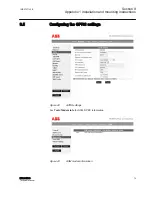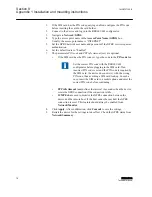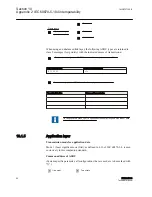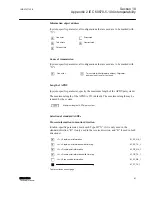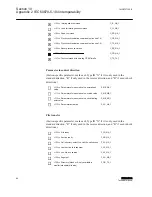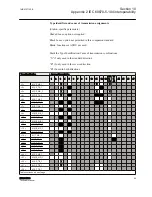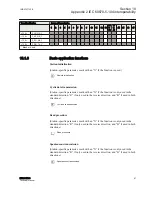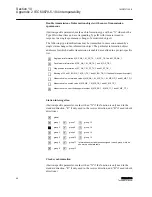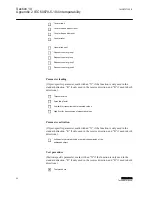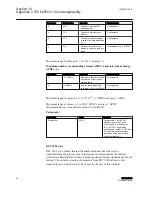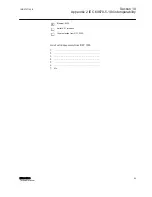
Double transmission of information objects with cause of transmission
spontaneous
(Station-specific parameter, mark each information type with an “X“ where both a
Type ID without time and a corresponding Type ID with time are issued in
response to a single spontaneous change of a monitored object.)
The following type identifications may be transmitted in succession caused by a
single status change of an information object. The particular information object
addresses for which double transmission is enabled are defined in a project-specific
list.
Single-point information M_SP_NA_1, M_SP_TA_1, M_SP_TB_1 and M_PS_NA_1
Double-point information M_DP_NA_1, M_DP_TA_1 and M_DP_TB_1
Step position information M_ST_NA_1, M_ST_TA_1 and M_ST_TB_1
Bitstring of 32 bit M_BO_NA_1, M_BO_TA_1 and M_BO_TB_1 (if defined for a specific project)
Measured value, normalized value M_ME_NA_1, M_ME_TA_1, M_ME_ND_1 and M_ME_TD_1
Measured value, scaled value M_ME_NB_1, M_ME_TB_1 and M_ME_TE_1
Measured value, short floating point number M_ME_NC_1, M_ME_TC_1 and M_ME_TF_1
Station interrogation
(Station-specific parameter, mark with an “X“ if the function is only used in the
standard direction, “R“ if only used in the reverse direction, and “B“ if used in both
directions.)
global
group 1
group 7
group 13
group 2
group 8
group 14
group 3
group 9
group 15
group 4
group 10
group 16
group 5
group 11 Information object addresses assigned to each group must be
shown in a separate table.
group 6
group 12
Clock synchronization
(Station-specific parameter, mark with an “X“ if the function is only used in the
standard direction, “R“ if only used in the reverse direction, and “B“ if used in both
directions.)
Section 10
1MRS757105 B
Appendix 2 IEC 60870-5-104 interoperability
88
RER601/603
Technical Manual


